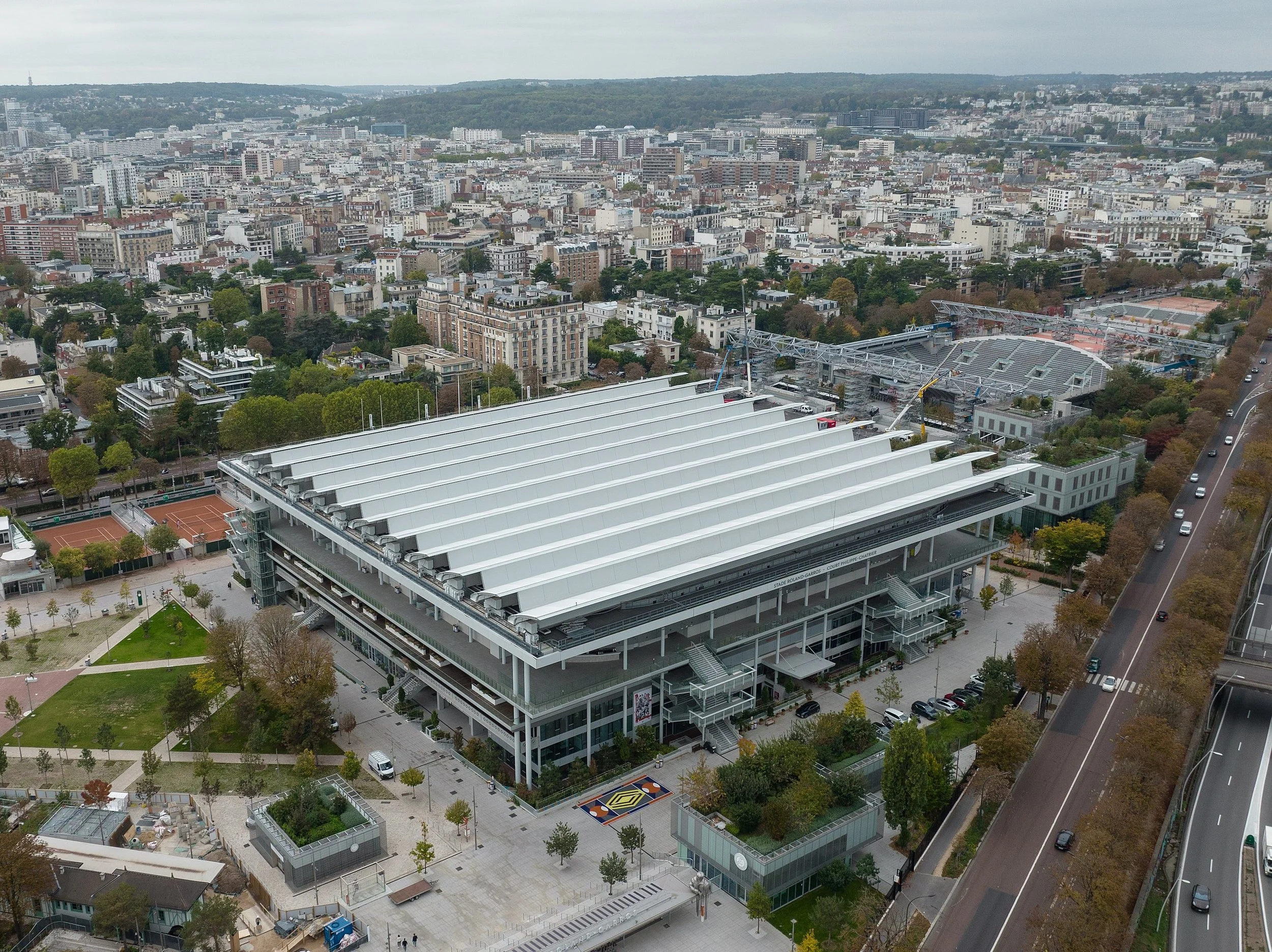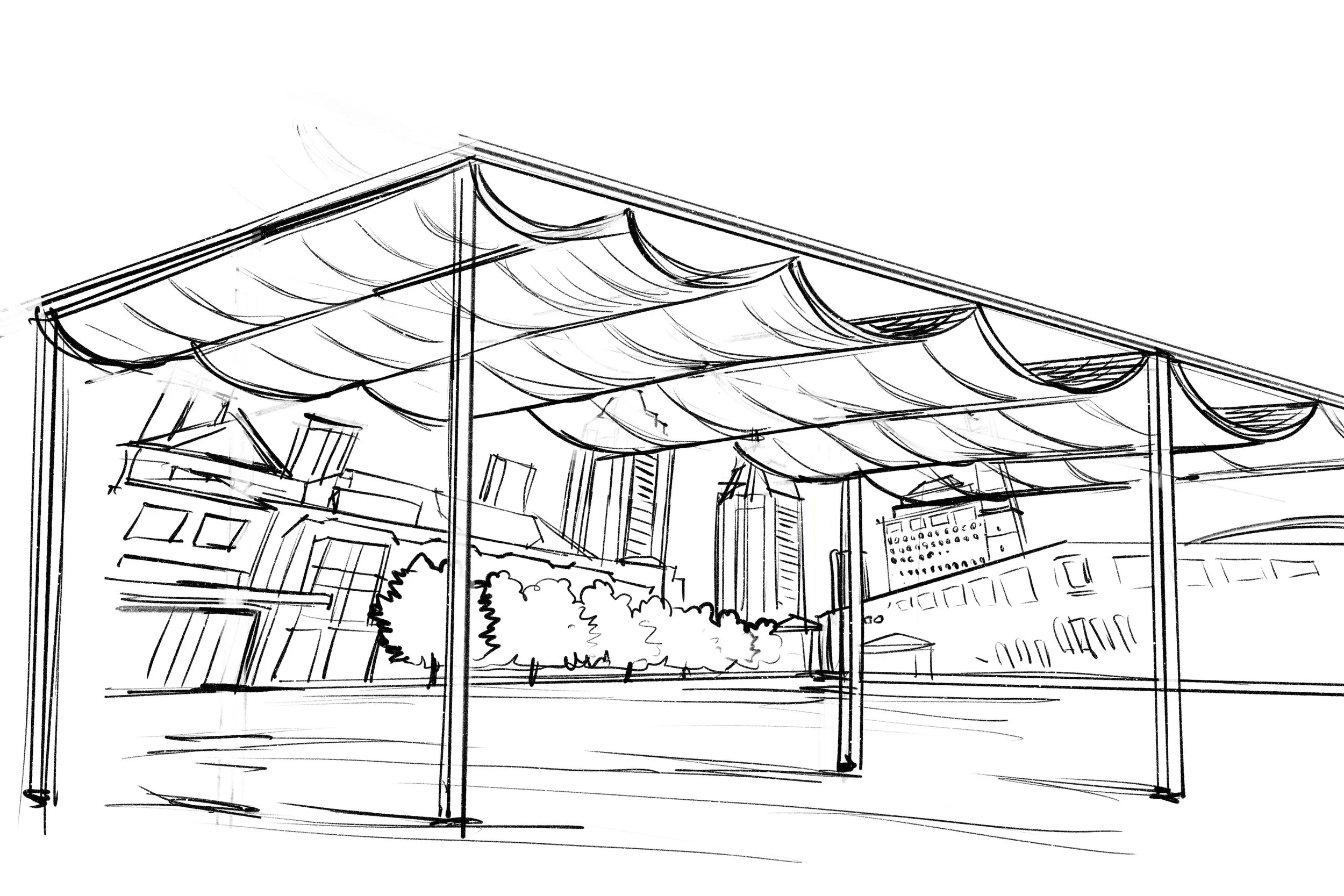New Member - 2D Renewables - From Stadiums to Sailboats: A Versatile Vision
Source: Patricia Faucher | · DEC · | July, 2024
Source: Image of the Stade Roland Garros in Paris. Photo: By Arne Müseler
Three colleagues from different backgrounds started 2D Renewables in 2023 while working at a renewable energy company. They set up their first company together, Rocky Mountain Kinetics, where they developed technology that could produce energy through movement, but soon decided to rebrand in order to focus solely on solar. The three founders started designing applications using paper-thin solar technology.
The vision came when one of the co-founders, Brent Register watched the 2023 French Open. Register realised how much potential there was in previously unspoken for large moveable surfaces for solar panels such as the Parisian stadium’s retractable rooftop made of a lightweight canvas which can pleat itself closed or opened in 15 minutes.
Register is the visionary and designer behind 2D Renewables, Bryce Rowe is the master engineer, while Derek Fortier manages everything else from enterprises, to project management, to manufacturing.
2D Renewables joined Partners in Project Green to draw concept sketches for Mississauga’s Celebration Square.
Stadiums stole the visionary’s heart, however, they are a challenging market to enter, notes Register. While Register is known for his visionary ideas, Derek brings a more pragmatic approach- he pushed to explore all other possibilities for paper- thin, moveable, retractable, boltable, glueable, sewable, and shatterproof solar. From then on, 2D Renewables has looked to anyone keen on solar with a ‘but’. “I'd love to install solar on my building, but its curvature won’t allow for it.” Or “I’d like to have a solar installation but I want something artistic”. Or “I’d love to put solar on my roof but I don’t want to re-engineer it to hold the weight of the panels,” Register offers as examples.
Stadiums stole the visionary’s heart, however, they are a challenging market to enter.
The CIGS is only 0.06 inches thick and weighs 3lbs for every 10 square feet of material thus the potential to produce electricity on surfaces where before went unutilised is great. However, the company is just as keen to take on even the smallest artistic solar applications.
The startup got their first big break when they connected with Nascar to design an installation that can be deployed onto the stadium seating sections on non event days. For Register, it proved the validation for their startup that they needed in demonstrating that flexible solar can be viable in North America. They are currently in the engineering phase of their first pilot project for a major Canadian stadium owner using the seats (same concept as with Nascar) on non-event days for solar electricity generation.
So what are the main limitations/disadvantages of using CIGS’ technology? First, they are about 4% less efficient than typical glass solar panels. Traditional solar panels operate at 22% efficiency while the CIGS technology operates at 18%, which could be easily circumvented by adding 4% more in square footage of the material. Having said that, 2D Renewables could take on projects as large as 2MW or as small as <1 kW. Furthermore, frequent manipulation of the fabric of a solar installation, via daily rolling or pleating, negatively impacts its lifespan to ten years. This is in contrast with the standard 25 years expected from stationary glass solar installations. For 2D Renewables, “size doesn’t matter. It’s the application that makes it fun and interesting, and where you would previously have a normal sail on a sailboat not producing electricity, you can gain an ROI in ten years.”
Register confided that for him, it’s not about becoming wealthy, it’s about “being part of the transformation”. “When you put solar in places that have to do with sports - like the roofs of stadiums or in their car parks, or on sails of sailboats, and artistic installations - people see the applicability, and the (indirect) endorsement by their favourite sports team - it elevates the accessibility of solar, and changes people’s perceptions. There are all these public installations everywhere that have people stopping and looking. You stop and look, and do something with it, and I think that’s huge. And the power of that is, beyond words. So really, size doesn’t matter,” contributes Register.
2D Renewables is happy to do commercial buildings because they can design something aesthetically pleasing that also needs to be functional, and in some cases, it has to move - something 2D Renewables is working to make happen.
When a client comes to 2D Renewables, the client is asked what they envision the solar installation project to look like. Register then comes up with the architectural- like drawings (a skill he developed from a young age drawing up his Lego projects). He then passes the project on to Derek who will oversee it, and to Bryce- who will determine how the installation will be built. “I’ll sketch something, and hand it off to these guys, and they’ll make it real,” Register acknowledges.
We asked Register to reflect on the main challenge of bringing an innovative startup to the market: validation- showing citizens that the technology works and can be applied anywhere. Part of that path has been through Register’s efforts to connect with people working in sustainability and renewables where he’s found other innovators who have gone through the ropes of bringing new innovations to market. “That’s what brought me to DEC - I first met them when I was working on Rocky Mountain Kinetics a few years ago - the DEC Team has been an incredible help. People who care start these organisations - like DEC, like Partners in Project Green, and BC Green... I learned pretty quickly that it’s the space of the community and everybody in the community is connected to somebody in their community, and I’ve had way more success since,” says Register.
The demand for solar is going to “skyrocket,” Register believes. “It’s about the application, and thinking outside of the box with what this technology can do - it’s about making efforts to make anything and everything more sustainable in lowering our carbon footprint. From covering mining tailing ponds with solar fabric, to having artistic installations at music festivals. The possibilities are now near to limitless,” adds Register.
“Inspiring the renewable energy transformation, I think for me is the number one goal.”
-Brent Register
While the CIGS technology is still relatively new, a similar technology of flexible solar has made significant strides in its application, most notably the Roll Out Solar Array (ROSA), and the ISS Roll Out Solar Array (iROSA) designed and developed by Redwire Space for NASA’s International Space Station. Other versions of the technology, where the cells are made even smaller, has been developed by Exeger, where their ‘Powerfoyle’ cells can turn any kind of light (candlelight to incandescent lighting) into electricity, Register informed us.
As the interview came to a close, we asked Register what his aspirations were for the future, he circled back to what he mentioned before. “I don’t care about being a billion-dollar guy. Obviously I want to keep a roof over my kids’ heads, but inspiring the renewable energy transformation, I think for me is the number one goal. I want people to be able to see, touch and feel, to be curious (about installing solar). I want people to embrace the change and I want to be part of that culture,” says Register.
To get in touch with 2D Renewables, visit: https://www.2drenewable.com/





